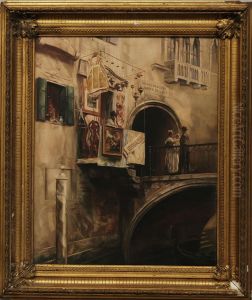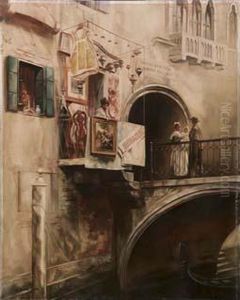F. Brest Paintings
Fernando García del Molino, known by his pseudonym F. Brest, was a prominent Argentine painter and teacher, born on December 24, 1833, in Santiago del Estero, Argentina. Despite the common association of the name F. Brest with him, this connection seems to stem from a confusion or blend of historical artistic figures, as Fernando García del Molino is primarily recognized for his contributions to Argentine art, notably in the genres of portrait and historical painting, rather than being directly linked to the pseudonym F. Brest. However, the mix-up underscores the complexities and intertwining narratives in the study of art history, particularly in regions with rich and diverse cultural heritages like Argentina.
Molino's early life was marked by a move to Buenos Aires, where he would eventually become a pivotal figure in the city's artistic community. His education in art began in earnest at the Academia de Bellas Artes de Buenos Aires, an institution that played a crucial role in shaping the careers of many Argentine artists in the 19th century. Molino's talent quickly became apparent, and his dedication to his craft led him to further his studies in Europe, a common practice among his contemporaries seeking to refine their techniques and absorb the rich artistic traditions of the Old World.
Upon returning to Argentina, Molino dedicated himself to both creating and teaching art, influencing a generation of artists as a professor at the National Academy of Fine Arts in Buenos Aires. His contributions to Argentine art during this period were significant, with his works often reflecting the socio-political realities of his time. Molino's paintings, characterized by their detailed realism and emotional depth, earned him a respected place among his peers and in the annals of Argentine cultural history.
Fernando García del Molino's legacy is not only in the paintings he left behind but also in his impact on the development of Argentine art through his students. He passed away on March 11, 1902, in Buenos Aires, but his influence persists, offering insight into the country's artistic evolution during a period of significant change. The confusion around the name F. Brest serves as a reminder of the complexities in attributing works and recognizing influence within the art world, especially in cases where historical documentation may be sparse or ambiguous.

